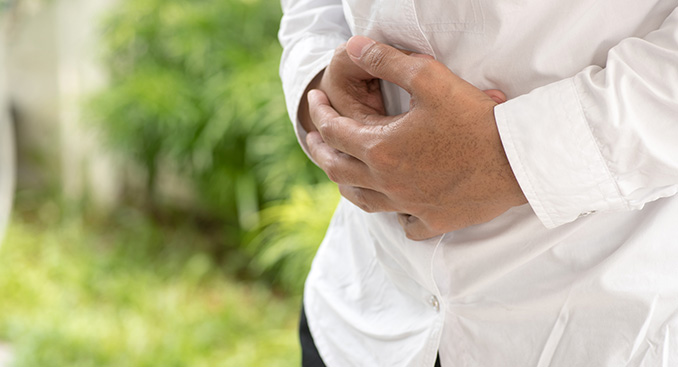What to Know About Hernias and Hernia Repair

Affecting more than 5 million Americans, a hernia is a common condition in which a part of the organ is displaced and protrudes through the wall of the cavity containing it – often involving the intestine at a weak point in the abdominal wall. Sometimes, a hernia is referred to as a rupture, or a “hole in the muscle wall.” But how do you know if you have a hernia? How are hernias treated?
Signs and symptoms of a hernia include a bulge that can be painful. Nausea, vomiting, and constipation can also be associated if the intestine is partially or completely obstructed. “We often hear that a hernia first develops during a period of heavy lifting, but it’s more likely to be a combination of factors, with genetics playing the biggest role,” says Bryan Ellis, DO, a surgeon and assistant program director of the TriHealth Comprehensive Hernia Program.
Congenital hernias occur naturally at birth, or shortly after, depending on a person’s genetic makeup. Acquired hernias develop when the muscles in the abdomen are weakened or damaged over time, and the body’s natural cycle of tissue breakdown and repair is disrupted. This can be due to aging or a poor balance of good versus bad collagen tissue.
Risk Factors for Acquired Hernias
In addition to a person’s genetics, there are certain risk factors for developing a hernia. A BMI over 30 is considered to put a person at risk, while a BMI over 40 is considered very high risk. Other factors include having diabetes, smoking, surgery, pregnancy, and sudden twisting or pulling (though this is rare). The chance of healing these hernias can be negatively impacted through lifestyle choices – for example, by smoking. Dr. Ellis says that’s why the TriHealth Comprehensive Hernia Program places an emphasis on prehabilitation.
Better Outcomes Through Prehabilitation
Prehabilitation involves preparing for surgery by eliminating the risk factors that could negatively impact healing. It involves meeting with consultants from multiple disciplines who will help get a patient to where they need to be prior to a hernia surgery.
Dr. Ellis recommends that to prepare for the best possible outcomes, patients should be free of chemical exposure like nicotine, strive for adequate nutrition, control their glucose levels, maintain a normal body weight, and increase core muscle strength. Patients can meet with a variety of specialists to help them meet their goals in these areas as needed. The Hernia Program is located inside the TriHealth Fitness & Health Pavilion, which also offers weight management services, diabetic management, physical therapy and smoking cessation programs, and an affiliated Cosmetic Center all under one roof.
When to Have a Hernia Repaired
“A patient should get their hernia repaired as soon as it starts to cause pain and limitations in activity,” Dr. Ellis says. “In addition, larger hernias may require a longer recovery time, so sooner is better.”
There are multiple surgical techniques that can be considered for hernia repair, and the patient will meet with a surgeon for a personal consultation to determine the best option. Some smaller hernia defects can be repaired with only a few stitches in a suture repair, while others will require a mesh, where the surgical area is reinforced with mesh that allows for greater tissue healing and strength. It results in a more lasting repair with a lower rate of recurrence.
Minimally invasive techniques are also options. Laparoscopic repairs are often performed through three or four small incisions. Robotic repairs use advanced instruments controlled by the surgeon, which enables more types of complex hernias to be repaired with minimally invasive techniques. This type of surgery is often less painful than other minimal access techniques, and leads to shorter hospital stays for the patient and a faster return to full activity.